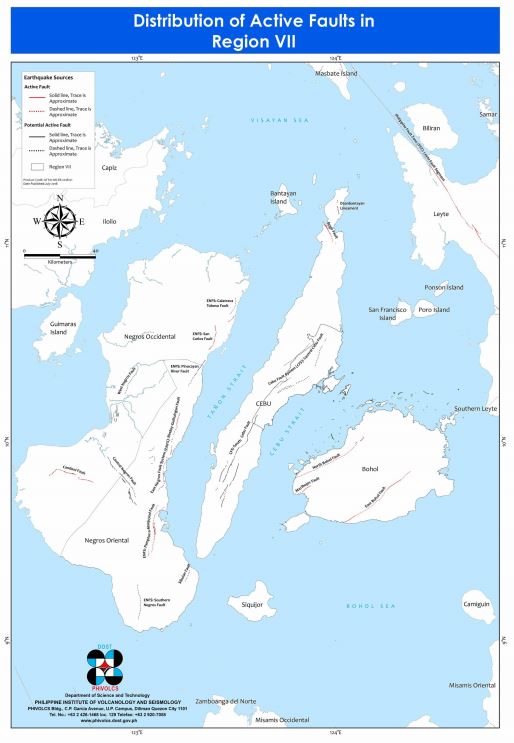An “earthquake atlas” that details Cebu’s earthquake fault line and areas vulnerable to it was launched by the Philippine Volcanology and Seismology (Phivolcs) in Cebu City yesterday.
Dr. Renato Solidum Jr., Science and Technology undersecretary and acting Phivolcs chief, said their Metro Cebu Earthquake Model (MCEM) Atlas can aid local officials in mapping out their own contingency plans for their local governments.
Solidum said their MCEM Atlas which can be downloaded through the Phivolcs website (www.phivolcs.dost.gov.ph) can be used as reference by local governments, developers and homeowners in building earthquake resistant homes and buildings.
The launching was attended by Metro Cebu and provincial officials.
Solidum warned that the Central Cebu fault line which cuts through five cities and three towns, can cause a 6.9 magnitude earthquake that “can result in thousands of casualties.”
The Central Cebu Fault runs through the cities of Cebu, Talisay, Danao, Naga and Toledo and the towns of Compostela, Minglanilla and Balamban.
“Aside from loss of life, these will also result to damages to major infrastructure facilities, temporary loss of water and energy supply, revenue, livelihood and it would affect transportation and mobility. This needs to be addressed (before the powerful earthquake hits Cebu),” Solidum said.
He said the atlas is a seismic ground motion hazard assessment plan specific for Metro Cebu.
“Local governments can reference the atlas for their land use plan. We can reduce the incidence of destroyed properties (that way),” Solidum said.
He said they plan to “laymanize” the atlas for the average user and include other data like surveys to determine how safe a structure/house is from an earthquake.
Nagiel Bañacia, chief of the Cebu City Disaster Risk Reduction and Management Office (CDRRMO), said the atlas can be used for their disaster preparedness program in dealing with quake hit areas in the city.
“The fault line in Cebu City can be found in the mountain barangays like Tabunan, Tagbao, Lusaran and Sudlon I. We also conduct trainings in barangays to capacitate them against disasters and calamities,” he said.
Baltazar Tribunalo, Provincial Disaster Risk Reduction and Management Officer (PDRRMO), said the atlas can be used to remind families to retrofit their house design to make it quake resistant.
